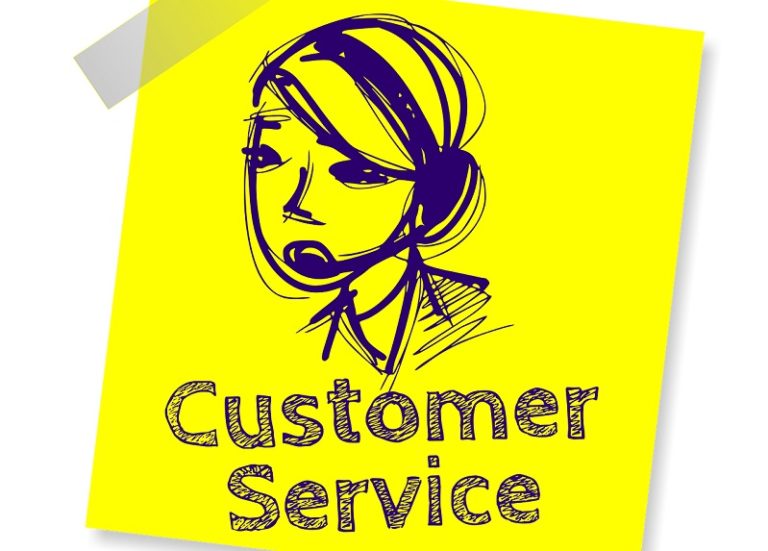

When a customer has a problem, the customer service representative’s response can make or break that customer relationship. Handle customer communication well, and you may earn a follower for life. Handle it poorly and, well, you know…
Even the most knowledgeable and friendly customer service rep meets communication stumbling blocks. When you communicate in writing you can easily be misunderstood. Tone is difficult to convey with a keyboard. Yet tone is crucial. Your customer should “hear” in your words that you care, and that you are sincerely doing what is required to right a wrong.
Follow these tips to achieve the right tone in written customer communication.
Say only what’s necessary.
Don’t apologize if there’s nothing to apologize for. (See below if there is.) Don’t offer personal information about yourself. Don’t take 50 words to say something you can say in ten. People tend to read quickly, especially when they’re already irritated.
Your inclination may be to buffer your conversation with a lot of social niceties or to try and share your own personal experiences. Read the situation. If you ask a person how their day is going, and they launch into a rant about how the long wait time to chat has ruined their day, skip to the point. If the person seems more relaxed, taking a minute to establish a human connection can pay off later.
Make apologies count.
If you or your company has genuinely made a mistake, say so. Even if you, personally, did nothing wrong, say “I’m sorry.” Nobody wants to hear you blame Bob in Sales or Marcy in IT. They definitely don’t want to hear your beefs with your company. Stay focused on the customer. Conjure a bit of empathy for their situation. You have probably been on the opposite end of a customer service email before.
Some customers act unreasonably, yes. You may not feel that an apology is warranted. That’s not the point here. Your customers keep you in business, so show your appreciation. Let them know you’re sorry they’ve experienced frustration, lost time, stress, or whatever they’re going through.
Avoid jargon and slang.
Your industry, whatever it is, undoubtedly uses its own jargon. You have names for products, services, and processes that roll off your tongue–and your fingertips. Proceed with caution. If a customer contacts you because he’s experiencing problems with the Widget 2.0, you can safely refer to the Widget 2.0. Keep in mind how long the customer has been using your product or service. A longtime user and a beginner may bring different vocabularies to the conversation. Adjust accordingly.
Similarly, slang has its place. Remember, it can be easily misunderstood in writing. For example, if you describe something as “sick,” that adjective could take on completely different meanings to different readers. If a customer addresses you using colloquial language, and you are comfortable doing so, it’s good to mirror their tone. Throw in a few trendy terms or common acronyms (LOL or BTW). However, avoid any acronym or phrase that implies swearing (WTF, AF) or anything that makes assumptions about a person’s gender, ethnicity, or ability. (Don’t call someone “dude.”)
Use key phrases that make the customer feel appreciated.
Help Scout says, “a good experience becomes great thanks to the pleasantness of the experience.” They recommend working certain key phrases into your customer service team’s daily communications: “Happy to help,” “Nice to meet you,” and “Thanks for bringing that to our attention.” You will think of others that pertain to your unique business. While using such phrases, let them become automatic but not repetitive. Choose the right phrase for the situation.
Keep your brand in mind.
Your whole staff should understand the company’s brand, regardless of their position. A key part of a brand is tone of voice. How you talk–not only in marketing materials, but in customer service, too–should reflect the brand. Is your brand crisp and sophisticated? Edgy and wild? Warm and fuzzy? The tone you take in customer service communication should echo that, within reason. Remember the other tips listed here, and don’t overdo it. You might be the Happy Fun Time Company, but if a customer is angry, respect their situation.
Offer other ways to communicate.
In some situations, the written word isn’t the best medium for customer communication. The person may find it difficult to explain their problem in writing. Perhaps misunderstandings have already arisen. The customer may simply be someone who communicates better by speaking than by writing. Offer another option like talking by phone or video chat, or if possible, even the chance to speak in person. Depending on the severity of the issue, everyone involved may find it reassuring to look someone in the eye and engage in a “real” conversation.
Tone is a key ingredient of writing, and it takes practice. Try some mock customer conversations with your team to learn how they write in the moment. Help Scout provides some humorous and helpful video examples. Master tone and your customer communication will strengthen your whole business.

